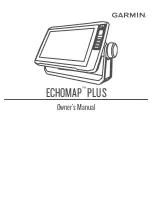
DRMS method. The 2 DRMS method describes a circle that the
receiver must be located in for 95% to 98% of the time and is the most
restrictive measurement method.
There are several inherent sources of error in GPS. Some factors are
intentional, some are a result of geometry, while others are caused by
equipment or natural conditions. One factor in accuracy and error in
GPS is the process of “Selective Availability.” Two levels of service
exist for GPS: Precise Positioning Service (PPS) and Standard
Positioning Service (SPS). PPS has the best possible accuracy and is
reserved for military use only. SPS was designed for civilian use and,
while less accurate than PPS, still has enough accuracy to be of
strategic concern to the military. Selective Availability (S/A) is a
deliberate introduction of errors. The DoD has stated that these
induced errors will be within 100 meters 95% of the time and within
300 meters 99.9% of the time.
Other errors that can degrade the accuracy of GPS are satellite clock
error, ephemeris error, ionospheric error, or Geometric Dilution of
Precision (GDOP). The atomic clocks used in the satellites are
extremely accurate, but because of the large distances involved even a
very small error will have an effect on overall accuracy. Clock error
can contribute a real distance error of about two feet. Ephemeris
information is a prediction of a satellite position in space. The actual
position of the satellite might differ slightly and can contribute to an
error of about two feet at the GPS receiver. The calculation of distance
used to fix a position of a GPS receiver depends on knowing the time it
takes for the signal to travel from the satellite to the receiver and the
speed of light. The density of the atmosphere affects the speed of light.
Ionospheric error is caused by changes in the density and thickness of
the ionosphere at different times of the day and year resulting in a
possible error of two feet to two hundred feet.
Geometric Dilution of Precision (GDOP) refers to the effect of the
geometry of the satellites used to arrive at a position fix. The best
possible arrangement of satellites would place one directly overhead
with three more spaced 120 degrees apart and very low over the
horizon. The perfect arrangement creates the smallest possible area of
error. As the actual geometry of the satellites is never ideal, the area of
possible error always exists and varies. GDOP is a multiplier of other
errors. For example, if the total error due to other causes was five meters
and the GDOP was six, the actual error would be 30 meters using the 2
329
Theory
GPS
Summary of Contents for Apollo NMC
Page 1: ...Apollo NMC Navigation Management Computer Operating Manual July 1999 P N 560 0164 01b ...
Page 92: ...NOTES 78 NAV Displays Operations ...
Page 108: ...Setting Editing Auto Descent Values continued Flow Chart 94 Nav Mode Procedures Operations ...
Page 111: ...Notes 97 Operations Nav Mode Procedures ...
Page 176: ...NOTES 160 Flight Plan FPL Mode Operations ...
Page 274: ...Notes 258 Approach Procedures Operations ...
Page 290: ...Notes 274 Approach Operations Operations ...
Page 292: ...Reproduced with permission of JeppesenSanderson Inc Reduced for illustrative purposes 276 ...
Page 296: ...Reproduced with permission of JeppesenSanderson Inc Reduced for illustrative purposes 280 ...
Page 302: ...Reproduced with permission of JeppesenSanderson Inc Reduced for illustrative purposes 286 ...
Page 308: ...Reproduced with permission of JeppesenSanderson Inc Reduced for illustrative purposes 292 ...
Page 316: ...Notes 300 ...
















































